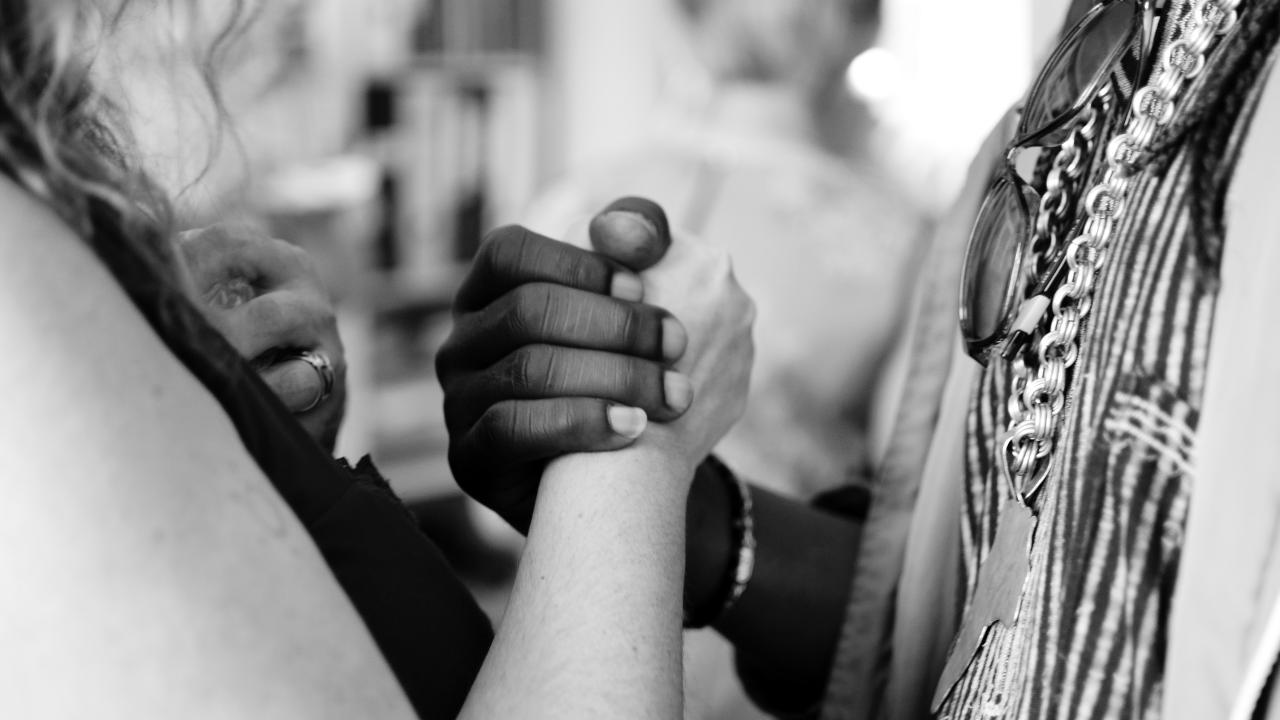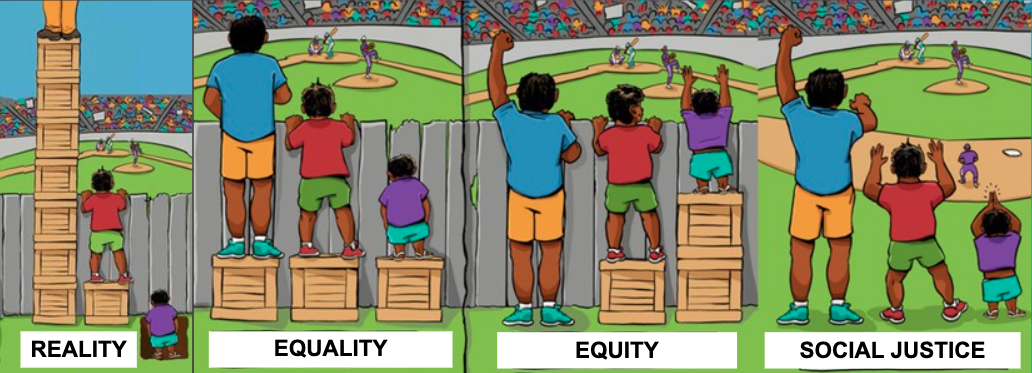
Don't Forget to Celebrate

As a part of our commitment to diversity, equity, inclusion and access (DEIA), we will be interviewing figures from our community and Network who are leading DEIA efforts in their organizations and presenting those interviews here, in the OWCN blog, to serve as inspiration for others.
Our first interview in this series was with Nicole Cropper, the newly-appointed Deputy Director of Justice, Equity, Diversity and Inclusion (JEDI) at the California Department of Fish and Wildlife (CDFW).
This first piece is called, “Don’t Forget to Celebrate”.
When I met and interviewed Nicole, her commitment to JEDI principles, passion for people, and overall excitement about her work are what really shined through. She recounted for me how the CDFW’s JEDI Program began in 2019 with the development of a JEDI Action Plan. Her overarching goal: to “get folks excited about the environment again” because, as she put it, “we need more than just the scientists, the professionals, to be involved in combating climate change. We need everybody involved.”
The first component of the Action Plan was to acknowledge the disconnect between environmental professionals and the general public. Nicole explained, “There’s this sentiment that the public doesn’t care and so they don’t participate. But the JEDI Action Plan really acknowledged that government and other systemic issues have really forced and caused that disconnect [between] the public and the environment.” She pointed out that bridging this gap is key in getting more people involved in the movement to protect our environment. To assist with this, she explained to me, the Action Plan laid out several activities, both internally and externally, that the department would aim to initiate in the coming years.
One such activity, which would aid in the department’s quest to better reflect the diversity of the state, was the development of a targeted recruitment program, including a career center where the public could receive explicit advice for how to get a state job. Another component was the development of affinity groups, groups formed around a shared interest or common goal.
Something that’s really important as you’re looking at recruiting diverse folks into your organization, [is that] there needs to be a recognition that because there aren’t a lot of people that may look like them, there may be some tension; they may feel like they don’t belong.”
Nicole noted that because of this, it’s important to look for ways to create environments where staff can be with like-minded folks, a place where they can get together and build a network, build a community, and engender that sense of belonging. There are three such affinity groups at the department so far: an LGBTQ+ (lesbian, gay, bisexual, transgender, queer, plus others) affinity group, a women’s affinity group, and a BIPOC (black, indigenous, and people of color) affinity group. Importantly, these groups are employee-led, allowing staff to shape the groups according to their own vision of what belonging and inclusion look like. The affinity groups reminded me of the various student clubs we had in high school that offered us a chance to connect with peers over shared backgrounds and interests. I remember initially scoffing at the idea of feeling included just because of some arbitrary characteristic I had in common with others, but I decided to give the Latino club a try to see what connections I might be able to make, and it wound up being the launching point for some of the friendships I have to this day. So maybe there’s something to that.
Externally, the JEDI Action Plan calls for identifying areas where the department can better engage with the community, the foundation of which is making community assessments to enhance communication with the public. “A community assessment is, at a very high level, looking at, who are your neighbors?”, Nicole explained. “We have over a million acres of land that we manage across the state. What are the demographics of the people, what kind of jobs do they have, what languages do they speak?” She then correctly quoted me the statistic that in California, over 40% of households speak a language other than English at home, and lamented that the materials the department distributes are all in English.
We are speaking English to people who don’t speak English, and that’s a huge missed opportunity.”
But, she argued, “it’s not only about translating documents into the right languages.” One has to “understand social cultural awareness to better know what formats or forums might work best to deliver information.” For example, some people and communities receive their information from radio, some from the newspaper, and others from in-person forums. Now-a-days it might seem that everyone has information at their fingertips, and in California, 91% of households have internet access, but the digital divide is real, with a significant proportion of low-income, Hispanic, senior, and disabled persons still lacking access. In order to effectively communicate with folks, you have to find and use the methods they use. The way Nicole sees it, “whatever the people want we should do, cause that’s going to have the most impact.” And, as she reiterated, that connection, that impact, is what’s going to get people engaged and excited about working to protect the environment.
Another critical component she emphasized is to include people with diverse perspectives, people from outside of your organization, and people who will be impacted by the decisions that are being made. A question to ask yourself is, “As we’re facing a lot of these really big environmental issues, [are] the folks that are going to be impacted by these issues aware of the decisions that are being made, and are they involved in the decision-making process?” Vital to this is building relationships with folks to help inform how to make information accessible to the people you want it to reach. She noted that this can be accomplished by partnering with community-based organizations and non-profits, and that having good relationships with such organizations is important because “they are your touchpoints to the people on the ground; they are the ones engaging with people day to day.”
Amidst the excitement of forward momentum, Nicole offered an essential note of caution: “This work can be hard. We’re tackling some really hard issues, like racism, and socio-economic disparities, and [working with] folks that have been harmed.” And because of that, one of her key values is to celebrate.
Celebration is really important because just talking about the negative all the time can be a drag and so we have instituted celebrating with monthly cultural heritage events.”
During these events, speakers from identified cultures involved in environmental fields are brought in to present to CDFW staff. Environmentalists, professors, federal leaders in the environmental space, advocates on the ground, youth leaders, and others that staff from the department may not normally hear from are brought in to share their stories. For Nicole, this has been a great success because “we’ve been able to connect the dots that even though these people don’t look like you, might not show up at the table like you, may not even view ‘science’ the same way as you do, they still care about the environment the same way that you do and have the same passion the same way that you do.” She noted, this has been the “great equalizer” for her and that many staff felt these events have helped bring commonality back to the department.
But there was some definite hesitation in the beginning. Nicole recounted that at first folks questioned, “Why are we celebrating cultures? We’re the Department of Fish and Wildlife. Why are we dedicating resources to this when we [have work to do]?” I instinctually wondered the same thing. But she quickly elucidated, “[Staff] need to be aware of the cultures around [them] in order to do [their] jobs efficiently, and in order to do that, they need to learn; this is part of that education.” My mind connected the dots. She had mentioned earlier in the interview about regional CDFW staff being the ones to customize their documents and messaging for the communities they serve, but in order to do so, they’d have to understand and build relationships with those communities, and in order to do that, they’d need to be able to understand and value different perspectives so that they could communicate effectively. Just as my consciousness wandered back to our conversation, she was explaining, “It’s not “this is in addition to your job”, it’s “this is your job.” By allowing staff the time for this work and showing them how it directly related to their job duties, she was able to change the perspective. And indeed, after the first handful of monthly cultural heritage celebrations, she reported that the feedback has been fantastic and that staff are even asking for more. For Nicole, the most exciting aspect so far has been seeing the conversation become normalized, and as a result, seeing staff feel empowered to start coming up with ideas, in turn, making them better able to do their jobs. “Folks are excited to talk about [DEIA] and will email me their ideas and want to get engaged in doing more. And so I think that’s the biggest excitement because one person isn’t going to be able to make the change; everyone has to buy in and everyone has to be engaged in this work.”
For organizations wanting to initiate similar programs, Nicole advised they should be aware that this work is slow and ongoing. “This work is hard, so take your time, because nothing changes overnight. We didn’t get to this space overnight. This is centuries of systemic issues. You have never arrived. This is ongoing, ongoing, ongoing work,” she emphasized. “It has to be incredibly intentional. You have to really internally look at your own processes, and your own personal biases, and your own stuff, but also your organization’s processes and how they may be hindering more folks from engaging with you.” Part of the challenge is that a lot of people are one step removed from even having the interest in participating, perhaps due to socio-economic disparities or other systemic issues, so how do we get past this? You need to start early, such as in Elementary school, to get people interested. But she says it doesn’t stop there. You have to keep engaging them, keep pulling them in. After Elementary school, engage them again in Middle School, then in High School. “Get in there, talk to them, get them excited about it,” she asserted. And keep engaging them, over and over again. It may take years, but, she reminded me, “This is slow work. Don’t be discouraged.”
I admitted to Nicole that in our current fast-paced society, the acknowledgement that it’s a slow process is a hard one. To think you may not even be here when this amazing transition happens is tough. And where to start? But you can get the ball rolling, add your piece to the colossal puzzle, and know that you’re part of the process on a much grander scale. She reassured me, “Having these kinds of conversations and setting up this groundwork and infrastructure is part of the process. You are doing the groundwork, and so celebrate that success. Celebrate that you’re even able to have these conversations, because you know, five years ago, even three years ago…no one was really even talking about DEIA yet.”
I ended the interview feeling both inspired and inundated with ideas on how I could make a difference. Those feelings subsequently spiraled into overwhelm, but then I remembered: just take it one step at a time; add one piece of the puzzle; do what I can in my current role (after all, it is my job); advocate locally; broaden as I go; do the hard work; and don’t forget to celebrate.

Senior Manager of Care Operations
For more information, please visit the CNRA (CA Natural Resources Agency) JEDI website: https://resources.ca.gov/Initiatives/Justice-Equity-Diversity-and-Inclusion
